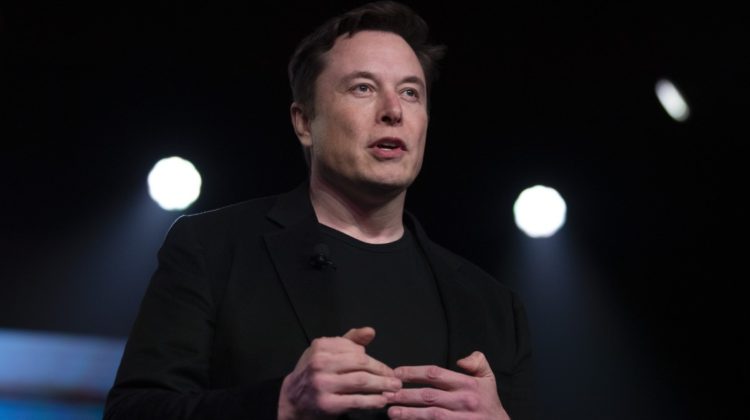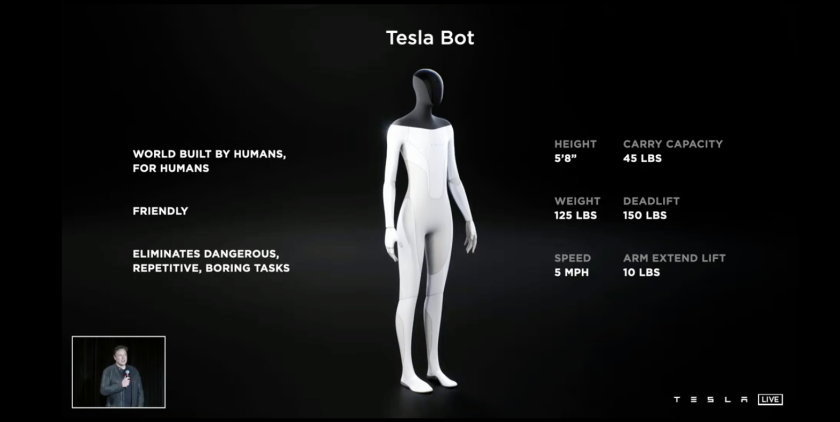
Elon Musk showed off his latest project Thursday night: a sleek white and shiny humanoid robot, sized a bit smaller than the average man, engineered to perform “dangerous, repetitive, boring” tasks – sometime in the future. Called the Tesla Bot, it will be ready for unveiling in prototype form sometime next year, Musk said — but if it’s not, it wouldn’t be the first time a promised Musk innovation turned out to be vaporware.

Tesla Livestream Screenshot
The mock-up robots present onstage with Musk at a Tesla company event Thursday night were not even vaporware. One was a statue-like model that didn’t do anything but stand still. The other was a person in a costume and mask who performed a crazy dance.
“Obviously, that was not real,” Musk said after the dancer finished. “The Tesla Bot will be real.”
Musk showed a slide with the robot’s specs. According to the slide, it will stand 5-foot-8 and weigh 125 pounds, with a top speed of 5 mph.
“It’s intended to be friendly, of course,” he said.
The robot reveal came at the end of a livestreamed event filled with technical detail about Tesla’s efforts in artificial intelligence.
If Musk was joking about the robot, he didn’t let on. He talked about the need to provide a universal income to those who lose their jobs as robots take over. “In the future, physical work will be a choice,” he said.
Musk has an adolescent’s love of science fiction jokes and sprinkles them into many of his public appearances and interviews, but he has spoken seriously about the threat posed by advanced artificial intelligence and cofounded a company, OpenAI, dedicated to keeping AI safe for humanity. He severed his ties with OpenAI sometime around early 2018.
Another of his companies, Neuralink, is working on a brain/computer interface; Musk has said augmenting human brains with computing power will help humans compete with future forms of AI. He’s said Neuralink will cure blindness, paralysis, deafness and mental illness. MIT Technology review has labeled such claims “neuroscience theater.”
Although Musk has notched many successes at Tesla and SpaceX, his rocket company, he has a long history of touting innovations that don’t pan out or arrive years behind schedule. For several years, he’s promised that the company was on the verge of launching a fleet of robotaxis powered by its Autopilot software, a million of them by the end of 2020. He’s yet to deploy a single one.
Years ago he promised an electric semi truck, a pickup-like Cybertruck and a rocket-powered roadster, but none are close to production. While Tesla allows vehicle owners to “beta test” what it calls “Full Self-Driving” on public roads, experts say it’s years away from achieving true autonomous driving. Musk, however, said the Tesla Bot will use Autopilot technology, “making use of all the same tools that we use in the car.”
“Our cars are semi-sentient robots on wheels,” he added.
Earlier this week, the National Highway Traffic Safety Administration announced an investigation into why the company’s partially robotic Autopilot feature has driven Teslas into police cars, fire trucks and other emergency vehicles stopped by the roadside at least 11 times. The crashes injured 17 people and killed one.
